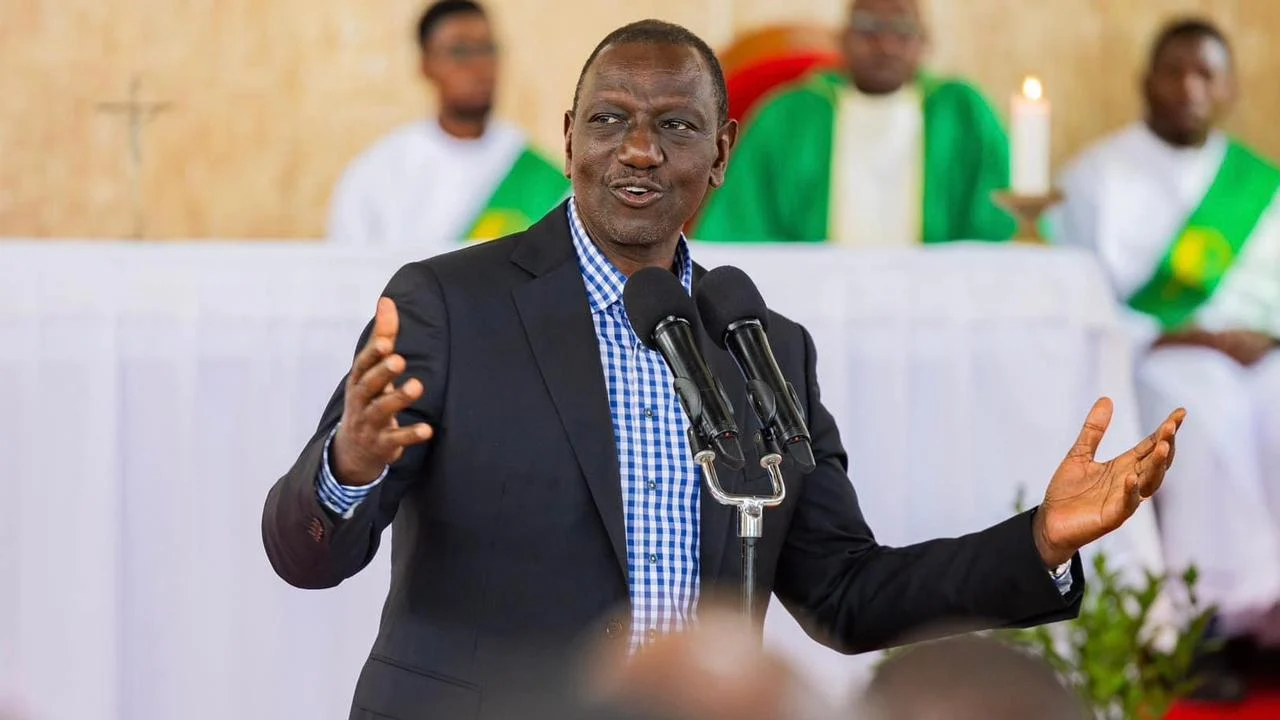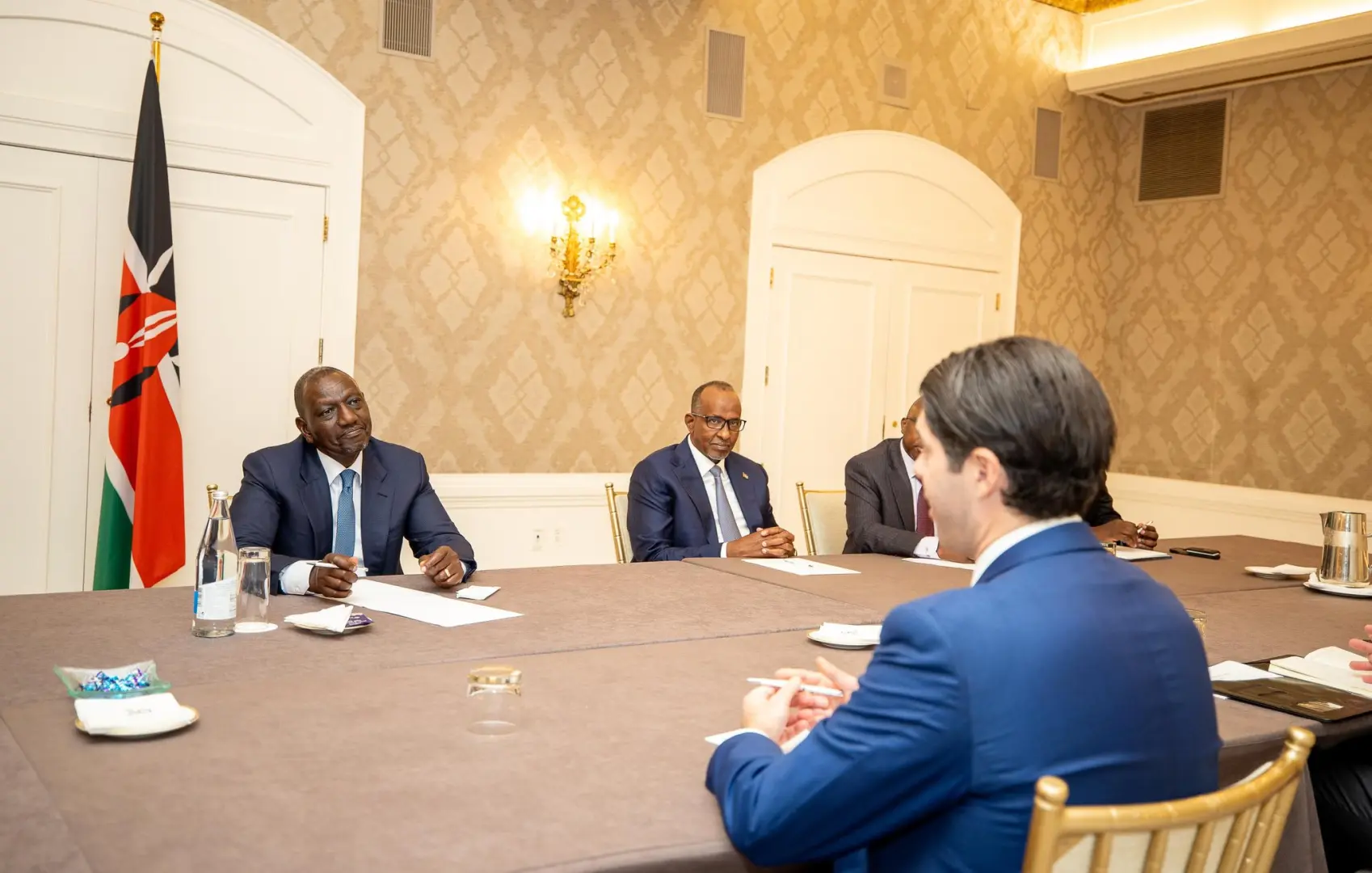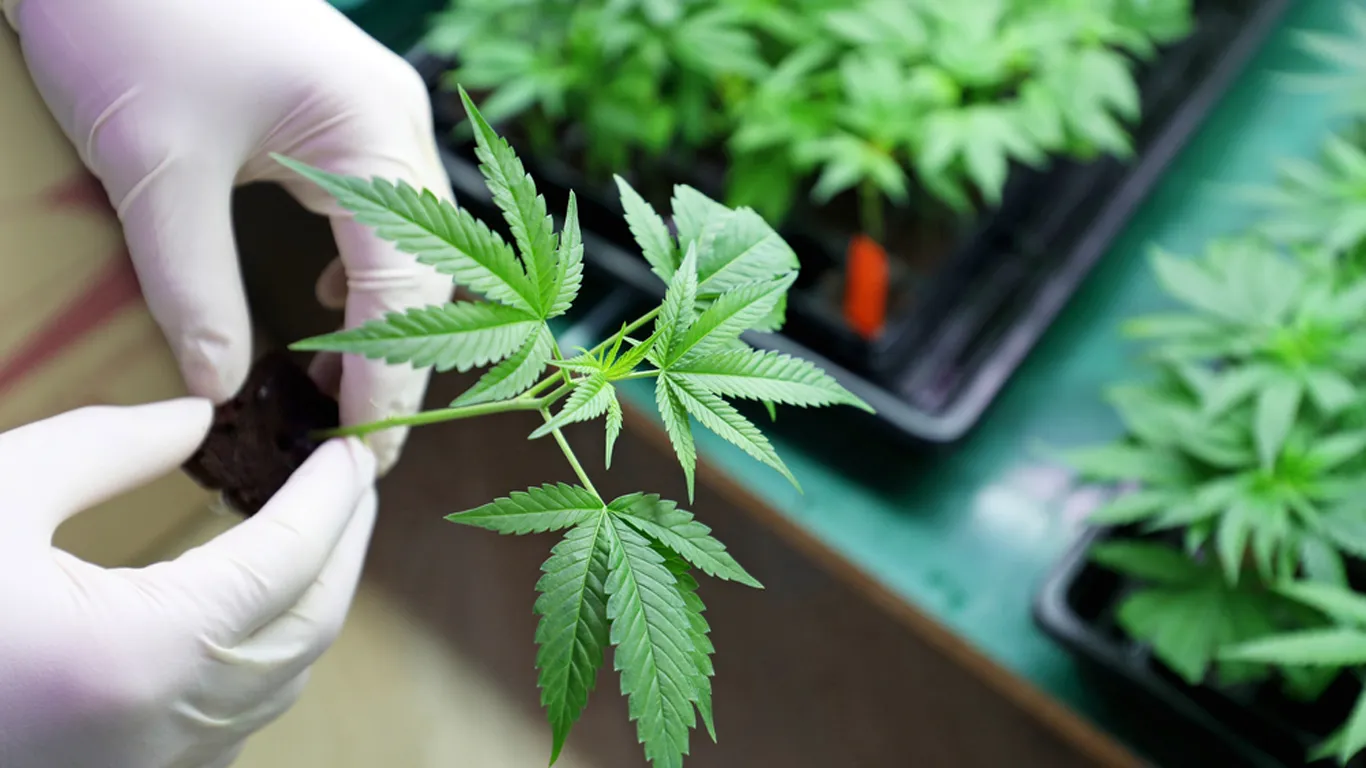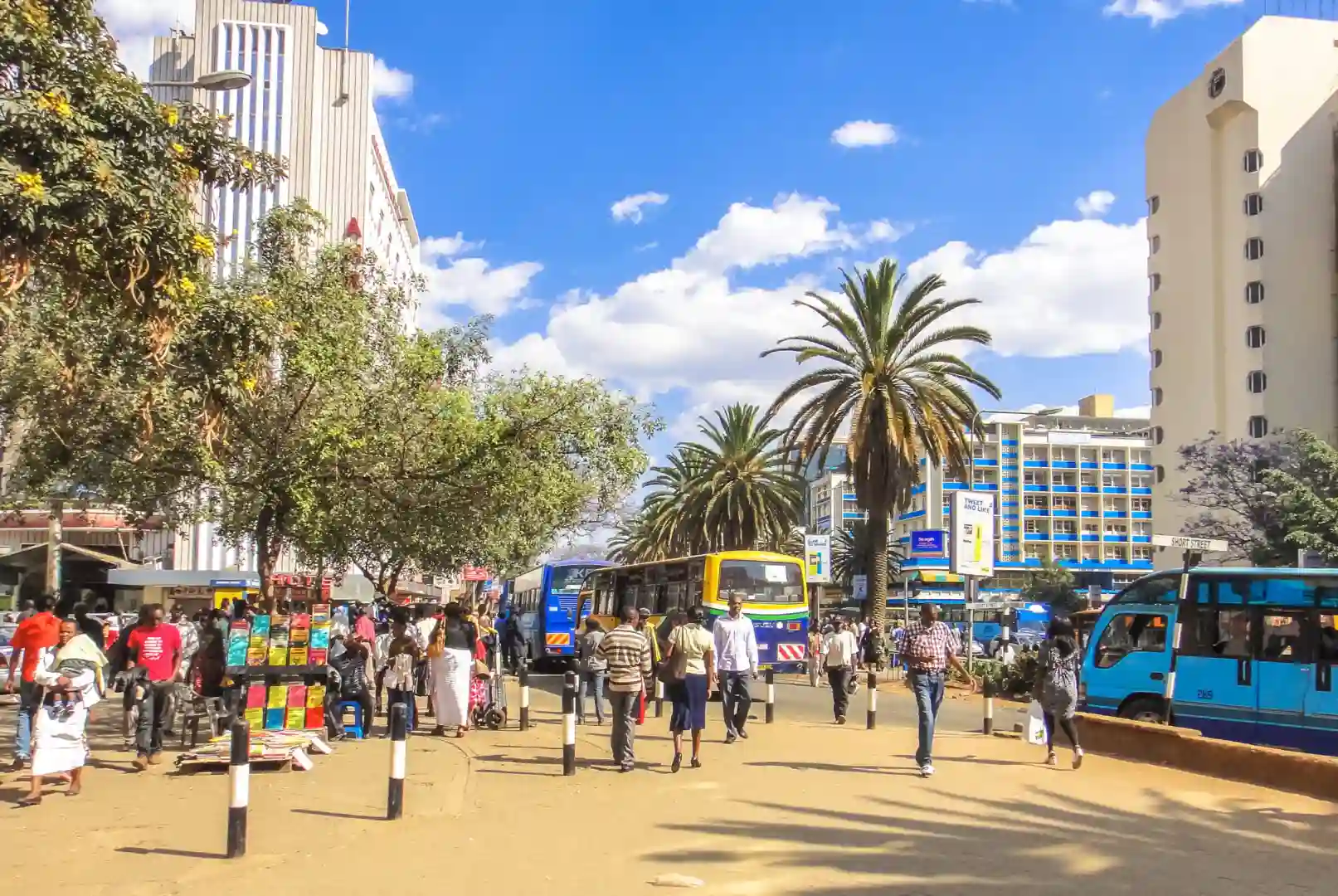In a significant boost to Kenya’s burgeoning micro, small, and medium enterprises (MSMEs), President William Ruto has announced a transformative KSh 5 billion (approximately $38.5 million USD) grant initiative, set to benefit over 100,000 small businesses across the nation. This landmark program, launched in partnership with the World Bank, underscores the government’s unwavering commitment to its Bottom-Up Economic Transformation Agenda (BETA), aimed at uplifting those at the base of the economic pyramid.
Speaking during an interdenominational church service at Friends Comprehensive School Kivaywa in Likuyani, Kakamega County, President Ruto detailed the mechanics of this ambitious grant. Each of Kenya’s 1,450 wards will see 70 small business owners receive KSh 50,000 each, culminating in a total disbursement of KSh 3.5 million per ward. This targeted approach is designed to ensure that the grant reaches grassroots entrepreneurs, fostering localized economic growth and job creation where it is most needed.
“This empowerment is not a façade or a temporary programme; it is a programme in our manifesto that seeks to lift those at the bottom of the economic pyramid,” President Ruto affirmed, emphasizing the long-term vision behind the initiative. The grant is more than just financial aid; it’s a strategic investment in the foundational strength of Kenya’s economy, recognizing that the vitality of its small businesses directly translates to national prosperity.
The Cornerstone of Growth: Kenya’s MSME Sector
Micro, Small, and Medium Enterprises (MSMEs) are widely recognized as the backbone of the Kenyan economy. They are critical drivers of employment, innovation, and wealth creation, absorbing a significant portion of the labor force, particularly youth, women, and individuals with lower levels of education who might otherwise face economic exclusion.
According to the Kenya National Bureau of Statistics’ MSME Survey of 2016, there were over 7.4 million MSMEs in Kenya (a number that has likely grown since), employing over 14.4 million Kenyans across all sectors. In 2015, the sector contributed approximately 33.8% to the national Gross Domestic Product (GDP). More recent reports, such as those from UNDP and MSEA, indicate that the MSME sector’s contribution to GDP has increased to roughly 40%, creating around 800,000 jobs annually. This makes the health and growth of MSMEs directly proportional to Kenya’s overall economic well-being.
However, despite their immense potential, Kenyan MSMEs face a myriad of challenges that often impede their growth and sustainability. These include:
- Limited Access to Finance: This is consistently cited as a primary hurdle, preventing businesses from scaling operations, investing in new technologies, or managing working capital effectively.
- Inadequate Infrastructure: Poor road networks, inconsistent power supply, and limited access to reliable internet can significantly increase operational costs and hinder market access.
- Lack of Skilled Labor: Gaps in specialized skills and vocational training often mean MSMEs struggle to find qualified employees.
- Limited Market Access: Difficulty in reaching wider markets, both domestically and internationally, due to logistical challenges, lack of market information, and intense competition.
- Lack of Technology Adoption: Many small businesses operate without leveraging modern technologies that could enhance efficiency and competitiveness.
- Regulatory and Compliance Issues: Complex and often cumbersome licensing and regulatory environments can be daunting for small business owners.
- Vulnerability to Shocks: MSMEs are highly susceptible to external shocks such as droughts, floods, or pandemics, often lacking the resilience to recover.
The KSh 5 billion grant, particularly through its direct disbursement to a large number of businesses at the ward level, aims to directly address the critical issue of access to finance, which is essential for these businesses to thrive.
Partnering for Prosperity: The World Bank’s Role
The initiative’s collaboration with the World Bank is a testament to the international community’s recognition of Kenya’s economic potential and the strategic importance of supporting its MSME sector. The World Bank, through its various programs, including the International Development Association (IDA), provides grants and low-interest loans to developing countries to boost economic growth, reduce poverty, and improve livelihoods.
The World Bank has a history of supporting MSMEs in Kenya. For instance, the Supporting Access to Finance and Enterprise Recovery (SAFER) project, financed by IDA, aimed to improve access to finance for over 250,000 MSMEs that were severely impacted by the COVID-19 pandemic. SAFER focused on fostering innovation, providing liquidity through microfinance banks (MFBs) and SACCOs, and de-risking lending, complementing government initiatives like the Women Enterprise Fund and Uwezo Fund. This ongoing partnership provides crucial technical assistance and financial leverage, enabling broader reach and greater impact for government programs like the newly announced KSh 5 billion grant. The World Bank’s involvement often brings with it expertise in program design, monitoring, and evaluation, ensuring transparency and effectiveness in the disbursement and utilization of funds.
The Bottom-Up Economic Transformation Agenda (BETA): A Holistic Approach
The KSh 5 billion grant is a tangible manifestation of President William Ruto’s signature economic policy, the Bottom-Up Economic Transformation Agenda (BETA). This agenda forms the core of Kenya’s Fourth Medium Term Plan (MTP IV) 2023-2027 and is geared towards achieving economic turnaround and inclusive growth through a value chain approach. BETA targets high-impact sectors to drive economic recovery and growth, ensuring rational resource allocation and providing impetus for Kenya Vision 2030 objectives.
BETA is structured around five core pillars:
- Agriculture: Aims to bring down the cost of living by lowering annual inflation rates to 5% and eradicating hunger. It focuses on transforming 2 million poor farmers into surplus producers through input finance and intensive agricultural extension support.
- Micro, Small and Medium Enterprise (MSME) Economy: The pillar directly addressed by this grant, it seeks to create 1.2 million jobs annually and expand the tax base.
- Housing and Settlement: Focused on providing affordable housing, which also serves as a significant job creation engine.
- Healthcare: Centered on achieving universal health coverage.
- Digital Superhighway and Creative Economy: Aims to leverage technology for job creation and economic diversification.
President Ruto’s administration believes that by strategically investing in these foundational sectors, Kenya can achieve sustainable economic growth, lift millions out of poverty, and create a more equitable society. The grant program directly supports the MSME pillar, recognizing its cross-cutting impact on job creation, income generation, and poverty reduction.
Far-Reaching Reforms: A Look at Key Sectors
President Ruto highlighted several key areas where his government has already implemented “far-reaching reforms,” yielding positive results:
Agricultural Reforms: Boosting Farmer Earnings
Agriculture remains the lifeblood of Kenya’s economy, contributing significantly to GDP and providing livelihoods for a majority of the population. The government’s reforms in this sector have been designed to increase earnings for farmers and ensure national food security.
Key interventions include:
- Subsidized Fertilizer: The reduction of prices for farm inputs, particularly fertilizer, has enabled farmers to increase production. This initiative aims to help farmers produce more, potentially increasing maize yields from 8 bags to 15-20 bags per acre with sufficient fertilizer application.
- Transformation in Maize, Sugar, and Coffee Sub-sectors:
- Coffee Sector: Reforms have targeted licensing, milling, and buying processes to eliminate cartels and ensure fair prices for farmers. President Ruto noted that coffee farmers are now selling their cherry at between KSh 110 and KSh 150 per kilogram, a substantial increase from an average of KSh 50-60 in 2022. Payment delays have also been addressed, with coffee cooperatives now being paid five days after selling their produce, aiming for farmers to receive payments within 10 days. The Capital Markets Authority (CMA) has been given a role in ensuring fairness at the Nairobi Coffee Exchange.
- Sugar Sector: Reforms ensure prompt payment for farmers and workers, with farmers receiving bonuses for the first time. Improved production is expected to lead to sugar exports soon, moving away from import reliance.
- Maize Production: High production has significantly reduced imports.
- Dairy Sector: Sweeping reforms are being introduced to put dairy farmers at the center of milk processing, making them managers of factories like New KCC, and addressing price disparities between farm gate and retail milk prices.
These reforms are crucial for improving the livelihoods of smallholder farmers, increasing agricultural output, and reducing the country’s reliance on food imports, thereby bolstering food security.
Universal Health Coverage (UHC) through Social Health Authority (SHA)
Healthcare is another critical pillar of the BETA agenda. The President once again urged Kenyans to register with the Social Health Authority (SHA) to benefit from the public insurance cover. SHA is the successor to the National Hospital Insurance Fund (NHIF) and is established under the Social Health Insurance Act of 2023. Its primary role is to provide comprehensive health insurance coverage to all residents, ensuring access to integrated preventive, promotive, curative, rehabilitative, and palliative health services.
The registration for SHA is mandatory for every Kenyan resident, including individuals, children (as dependents), and employees (through their employers). Registration can be done via USSD code (*147#) or through the official SHA website (sha.go.ke).
President Ruto announced that since October 2024, an impressive 4.5 million Kenyans have already received medical services under SHA, at a cost of KSh 41 billion. This highlights the immediate impact and broad reach of the new health insurance scheme, significantly reducing the financial burden of healthcare on ordinary citizens. The government has also strengthened the legal framework for mandatory Social Health Insurance enrollment and trained over 106,542 Community Health Promoters (CHPs), providing them with kits to extend primary healthcare services to communities.
Job Creation: Affordable Housing, Digital Opportunities, and Labour Export
Job creation is a central tenet of the Bottom-Up agenda. The government is pursuing a multi-pronged approach to expand employment opportunities for young Kenyans:
- Affordable Housing Programme (AHP): This flagship program is not just about providing decent housing; it’s a massive job creation engine. The AHP aims to construct 200,000 units annually, with a target of 1 million homes over the next five years. As of April 2025, over 140,000 affordable houses have been constructed. The program has already created employment opportunities for over 250,000 youths, with projections indicating more than one million employment opportunities throughout its lifecycle. It has also ring-fenced KSh 11 billion for Jua Kali artisans and MSMEs to provide essential construction materials and services, thereby stimulating local economies. The AHP offers flexible payment plans, including rent-to-own arrangements, making homeownership accessible.
- Modern Fresh Produce Markets: Investing in new and upgraded markets for fresh produce helps streamline supply chains, reduce post-harvest losses, and create jobs in logistics, retail, and value addition.
- Digital Jobs: Initiatives like the Ajira Digital Programme are crucial for leveraging Kenya’s growing internet access and digital literacy to create online employment opportunities for youth in the gig economy and beyond. The expansion of fiber optic connectivity (53% increase, with an additional 4,690 km between 2022 and 2025) and the digitization of over 20,985 government services are enhancing digital inclusion and creating pathways for digital jobs.
- Labour Export: The government is actively facilitating opportunities for young Kenyans to work in different parts of the world. President Ruto stated that over 400,000 young people are currently working abroad, leveraging Kenya’s human capital to generate remittances and acquire valuable skills.
Infrastructure Development in Western Kenya
President Ruto also provided updates on significant development projects specifically benefiting Kakamega County and the wider Western Kenya region:
- Electricity Connectivity: KSh 3 billion has been allocated to connect 35,000 households to electricity in Kakamega County, a crucial step in improving living standards and supporting small businesses.
- Road Projects: Construction of stalled road projects in Kakamega County has resumed, addressing long-standing infrastructure deficits.
- Rironi-Mau Summit-Eldoret-Malaba Road Dualling: This major national project, connecting critical economic hubs and serving as a vital trade corridor to neighboring countries, is set to begin its dualling phase in August. The project involves upgrading the existing single carriageway into a four-lane dual carriageway from Rironi to Naivasha town, and then expanding to six lanes from Naivasha to Nakuru City, significantly easing traffic congestion and improving efficiency. This project is often implemented under a Public-Private Partnership (PPP) toll infrastructure model to reduce reliance on government loans.
- Standard Gauge Railway (SGR) Extension: The highly anticipated extension of the SGR from Naivasha to Kisumu and eventually to Malaba is scheduled to commence at the end of the year. This extension will further facilitate faster and more efficient transport of goods and passengers, strengthening Kenya’s position as a key transit point for East African trade.
These infrastructure developments are vital for unlocking the economic potential of Western Kenya, improving connectivity, and supporting the growth of agriculture, trade, and industry in the region.
Unity for Transformation: A Political Imperative
Beyond economic programs, President Ruto underscored a political message of unity and cooperation. He reiterated his commitment to eradicating vices that divide Kenyans along tribal, regional, and religious lines, advocating for a “broad-based government” that unites the country behind a common transformation agenda.
Leaders accompanying the President, including National Assembly Speaker Moses Wetang’ula and Governors Fernandes Barasa (Kakamega), Ken Lusaka (Bungoma), and Johnson Sakaja (Nairobi), echoed these sentiments. Speaker Wetang’ula commended President Ruto for championing inclusive transformation, while Governor Sakaja affirmed the government’s commitment to implementing development programs fairly, ensuring no part of the country is left behind. Governor Lusaka acknowledged the President’s track record, implying support for his political future.
President Ruto directly addressed those opposed to his administration, stating they “do not have an alternative plan to transform the country and uplift Kenyans,” accusing them of focusing on “anti-government slogans and promoting hatred, division, and tribal politics.” This highlights the political context in which these economic programs are being rolled out, with the government seeking to consolidate support and demonstrate tangible progress. The emphasis on unity, collaboration, and a shared vision for national development is consistently articulated as a necessary condition for achieving the ambitious goals outlined in the BETA agenda. The active involvement and public support from county governors signify a growing alignment between national and devolved governments, which is crucial for effective implementation of development projects across the country.
Ready to take your career to the next level? Join our dynamic courses: ACCA, HESI A2, ATI TEAS 7 , HESI EXIT , NCLEX – RN and NCLEX – PN, Financial Literacy!🌟 Dive into a world of opportunities and empower yourself for success. Explore more at Serrari Ed and start your exciting journey today! ✨
Photo Source: Google
By: Montel Kamau
Serrari Financial Analyst
16th June, 2025
Article, Financial and News Disclaimer
The Value of a Financial Advisor
While this article offers valuable insights, it is essential to recognize that personal finance can be highly complex and unique to each individual. A financial advisor provides professional expertise and personalized guidance to help you make well-informed decisions tailored to your specific circumstances and goals.
Beyond offering knowledge, a financial advisor serves as a trusted partner to help you stay disciplined, avoid common pitfalls, and remain focused on your long-term objectives. Their perspective and experience can complement your own efforts, enhancing your financial well-being and ensuring a more confident approach to managing your finances.
Disclaimer: This article is for informational purposes only and does not constitute financial advice. Readers are encouraged to consult a licensed financial advisor to obtain guidance specific to their financial situation.
Article and News Disclaimer
The information provided on www.serrarigroup.com is for general informational purposes only. While we strive to keep the information up to date and accurate, we make no representations or warranties of any kind, express or implied, about the completeness, accuracy, reliability, suitability, or availability with respect to the website or the information, products, services, or related graphics contained on the website for any purpose. Any reliance you place on such information is therefore strictly at your own risk.
www.serrarigroup.com is not responsible for any errors or omissions, or for the results obtained from the use of this information. All information on the website is provided on an as-is basis, with no guarantee of completeness, accuracy, timeliness, or of the results obtained from the use of this information, and without warranty of any kind, express or implied, including but not limited to warranties of performance, merchantability, and fitness for a particular purpose.
In no event will www.serrarigroup.com be liable to you or anyone else for any decision made or action taken in reliance on the information provided on the website or for any consequential, special, or similar damages, even if advised of the possibility of such damages.
The articles, news, and information presented on www.serrarigroup.com reflect the opinions of the respective authors and contributors and do not necessarily represent the views of the website or its management. Any views or opinions expressed are solely those of the individual authors and do not represent the website's views or opinions as a whole.
The content on www.serrarigroup.com may include links to external websites, which are provided for convenience and informational purposes only. We have no control over the nature, content, and availability of those sites. The inclusion of any links does not necessarily imply a recommendation or endorsement of the views expressed within them.
Every effort is made to keep the website up and running smoothly. However, www.serrarigroup.com takes no responsibility for, and will not be liable for, the website being temporarily unavailable due to technical issues beyond our control.
Please note that laws, regulations, and information can change rapidly, and we advise you to conduct further research and seek professional advice when necessary.
By using www.serrarigroup.com, you agree to this disclaimer and its terms. If you do not agree with this disclaimer, please do not use the website.
www.serrarigroup.com, reserves the right to update, modify, or remove any part of this disclaimer without prior notice. It is your responsibility to review this disclaimer periodically for changes.
Serrari Group 2025












